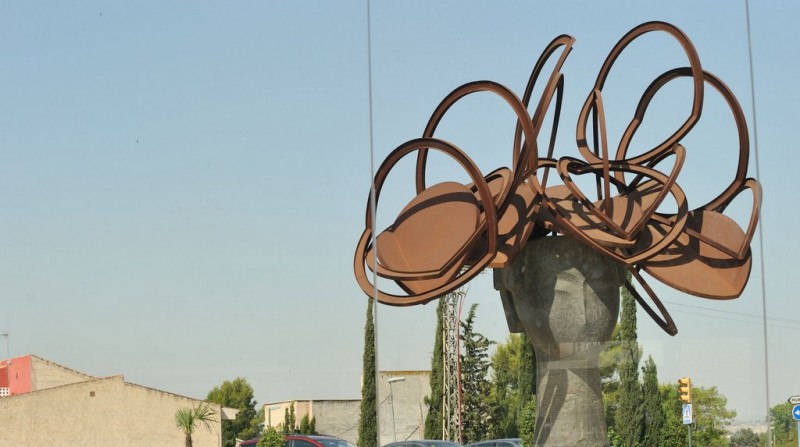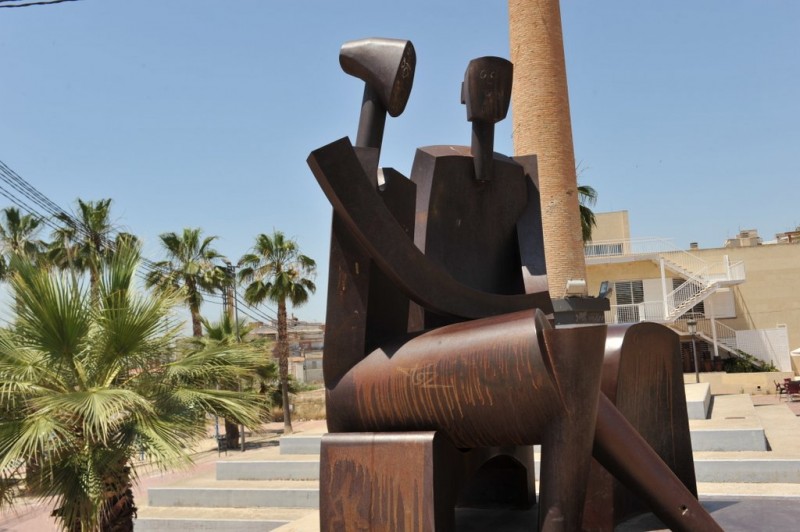
To be listed on the CAMPOSOL TODAY MAP please call +34 968 018 268.
Urban sculptures in Molina de Segura
The sculptures commemorate the importance of the canning industry in the history of Molina

In recent years considerable importance has been placed by the Town Hall of Molina de Segura on the commemoration of the industrial past of the municipality, the idea being to create an open-air museum showcasing this aspect of Molina’s heritage.
It is as part of this initiative that seven of the industrial chimneys in the town still stand as monuments to the canning industry which grew in Molina in the late 19th and early 20th centuries, and further embellishments have been provided in the form of a series of urban sculptures.
One of these is “La Dama de Molina”, a sculpture by Manolo Valdés outside the Mudem museum, where the remains of the old defensive wall which surrounded Molina almost a thousand years ago can be seen. The 8-metre-high metal structure represents a woman whose hair grows into branches like those of a tree, and the choice of materials is deliberately representative of the canning sector which contributed decisively to the economic growth of Molina.
Another is “El Consejo”, which stands in the park known as Huerto Fayrén, where another of the old chimneys stands. Sub-titled “Homenaje a la Mujer”, this work by Manuel Mateo Cuenca shows two seated figures engaged in dialogue, the adult giving sound advice to the child.
“La Menina”, also known as “Vestida de lluvia”, is installed at the “Pascual del Parador” roundabout on the intersection of the N-301 road and the road which leads to Torrealta and Ribera de Molina. It is 5 metres high and 3 metres wide, and shows the myth of Eurydice of Danaë, who in Greek mythology was imprisoned by her father Acrisius in a bronze tower when it was predicted by the Oracle that his grandson would kill him. Danaë was freed by Zeus with a rain of gold which destroyed the tower and impregnated her with Perseus, who would fulfill the prophecy by accidentally striking his grandfather on the head with a discus.
The cage in this structure is reminiscent of those which were used in the canning industry to dip cans into boiling water, and it is also possible to relate it to the myth of Danaë and the rain of gold to the riches which industry brought to Molina.

Finally, “Semíramis” by Pepe Yagües in the Plaza de la Molinera is based on the Babylonian myth in which Semíramis used her charm and intelligence to rise to power, but when she was about to be dethroned she transformed into a dove and disappeared. The structure, which weighs 500 kilos, is seven metres long, and stands next to the chimney which was formerly part of the Hernández Pérez Factory.
Click for full information about the Molina de Segura municipality in English























